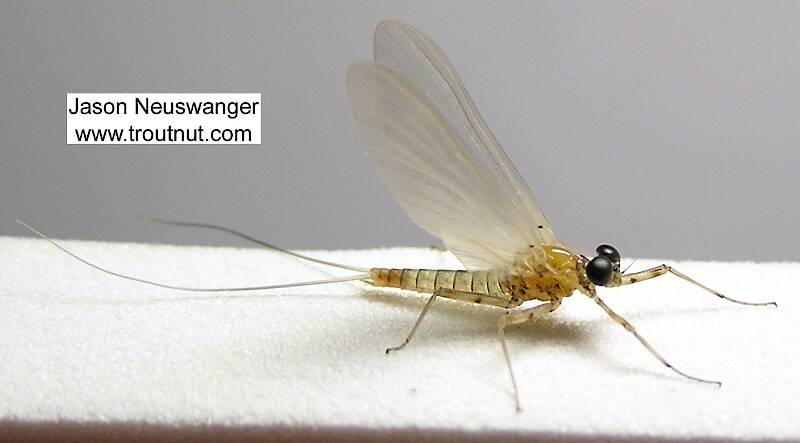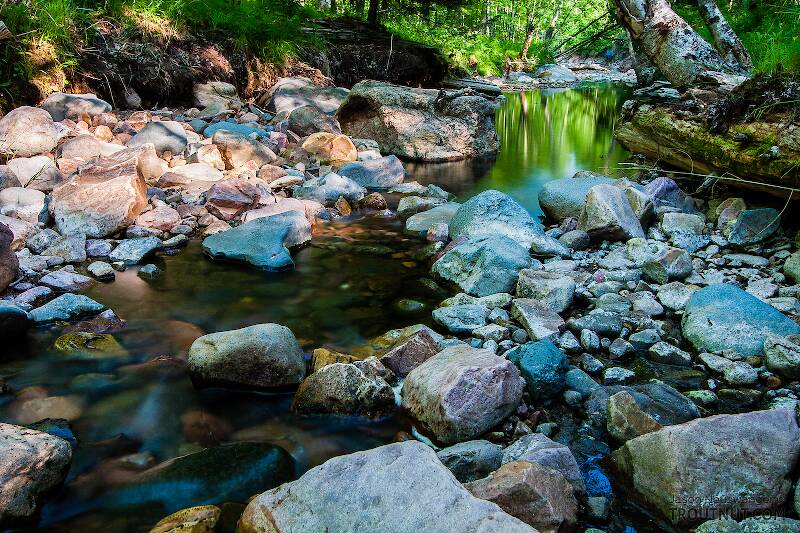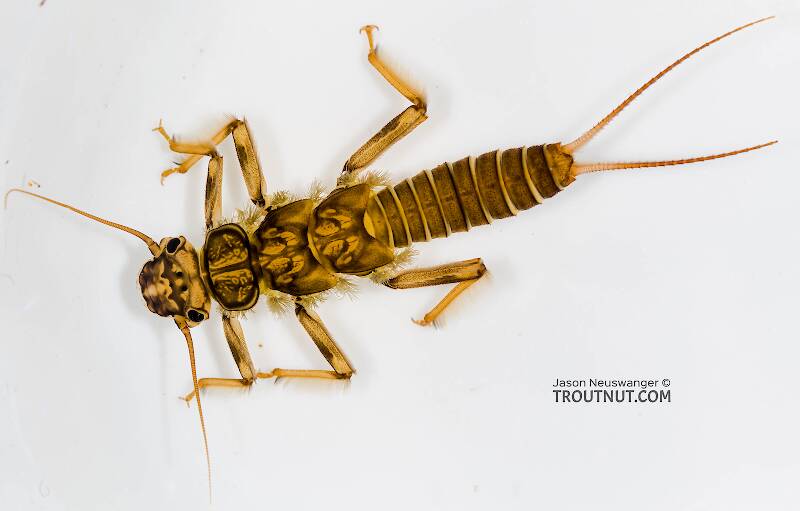
Blue-winged Olives
Baetis
Tiny Baetis mayflies are perhaps the most commonly encountered and imitated by anglers on all American trout streams due to their great abundance, widespread distribution, and trout-friendly emergence habits.
Featured on the forum

Troutnut is a project started in 2003 by salmonid ecologist Jason "Troutnut" Neuswanger to help anglers and
fly tyers unabashedly embrace the entomological side of the sport. Learn more about Troutnut or
support the project for an enhanced experience here.

This is my favorite mayfly from 2004, and it appears on my popular Be the Trout: Eat Mayflies products. Check them out!
Its identification is really up in the air. It might be a late-season vitreus dun but it may very well be one of the more obscure species in that genus.
Its identification is really up in the air. It might be a late-season vitreus dun but it may very well be one of the more obscure species in that genus.
Troutnut on Jul 2, 2006July 2nd, 2006, 4:49 pm EDT
This is one of my favorite specimens from the old site pictures. I collected it in early September during a fishable hatch of its kind on a smooth, deep pool on the Beaverkill.
The eyes seem nearly contiguous, the first two segments of the fore tarsi are of equal length, and the wings are unmarked, all of which suggest Epeorus. From the above/side picture I can see that the basal costal crossveins do not slant upward as they should with Epeorus, although the main side view seems to maybe show that. I wish I had a better camera when I photographed this one.
It also pretty strongly resembles the E. vitreus dun shown in Ted Fauceglia's book, Mayflies. It clearly does not match the E. vitreus dun pictured on Color Plate XII of Hatches II, but it looks like the unidentifeid eastern Epeorus species on Color Plate XIII of the same book.
By some accounts, there does not seem to be a common eastern species of Epeorus hatching this late, but other books show it on the tail end of the emergence times for Epeorus vitreus. So that's my best guess for now.
The eyes seem nearly contiguous, the first two segments of the fore tarsi are of equal length, and the wings are unmarked, all of which suggest Epeorus. From the above/side picture I can see that the basal costal crossveins do not slant upward as they should with Epeorus, although the main side view seems to maybe show that. I wish I had a better camera when I photographed this one.
It also pretty strongly resembles the E. vitreus dun shown in Ted Fauceglia's book, Mayflies. It clearly does not match the E. vitreus dun pictured on Color Plate XII of Hatches II, but it looks like the unidentifeid eastern Epeorus species on Color Plate XIII of the same book.
By some accounts, there does not seem to be a common eastern species of Epeorus hatching this late, but other books show it on the tail end of the emergence times for Epeorus vitreus. So that's my best guess for now.
Jason Neuswanger, Ph.D.
Troutnut and salmonid ecologist
Troutnut and salmonid ecologist
GONZO on Oct 28, 2008October 28th, 2008, 8:15 am EDT
The little dark marks on the posterior part of the tergites and the dark humeral vein seem consistent with a vitreus ID.
Quick Reply
Related Discussions
Topic
Replies
Last Reply
0
Oct 24, 2006
by Troutnut
by Troutnut
1
Oct 19, 2006
by Troutnut
by Troutnut
1
Apr 8, 2009
by Troutnut
by Troutnut



